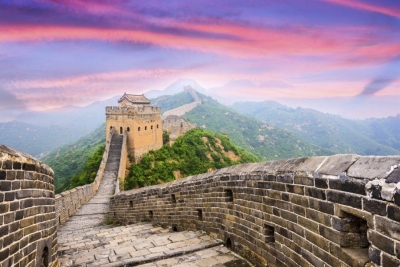
Mt Everest
Mt Everest is a mountain of the central Himalaya Mountains on the border of Xizang (Tibet) and Nepal. At 8850m high, Mt Everest is the highest elevation in the world. Numerous attempts to climb Everest were made from 1921; the summit was finally reached by Edmund Hillary of New Zealand and Tenzing Norgay of Nepal in 1953.
The Great Barrier Reef
The Great Barrier Reef is the largest complex of coral reef in the world. Composed of more than 2800 individual reefs, the Great Barrier Reef is separated from the mainland by a shallow lagoon from 16–161km wide. It is approximately 2011km long, off the northeast coast of Queensland here in Australia. In addition to at least 300 species of hard coral, it’s vividly coloured banks are known for their exotic fish and crustaceans.
The reef was designated a UNESCO World Heritage site in 1981.
Grand Canyon
Carved by the Colorado River, that winds through northwest Arizona in the USA, the Grand Canyon is a huge gorge, approximately 1.6km deep. Its width ranges from 6.4 – 29km and it runs for 450km.
In 1908, the Grand Canyon was designated as a national monument and, in 1919, the 492,000 hectare Grand Canyon National Park was created by an Act of US Congress. Over 5m visitors make their way to the Grand Canyon every year. There are several major ecosystems contained in the area, and more than 1500 plant, 355 bird, 89 mammalian, 47 reptilian, 9 amphibian, and 17 fish species are found there.
Paricutin Volcano
Paricutin Volcano is a volcano in the Mexican state of Michoacan. The eruption that created Parioutin began in 1943 and continued for nine years until 1952. Most of the explosive activity was during the first year of the eruption when the cone grew to 336m. The cone continued to grow for a further eight years but grew only another 88m. Lava flows covered about 25 square km and had a volume of about 1.4 cubic km. The rate of eruption declined steadily until the last six months of the eruption when violent explosions were frequent and violent. The birth of Paricutin provided volcanologists of the time the rare opportunity to 1 witness such an event.
Rio de Janeiro Harbour
On the east coast of Brazil, the city of Rio de Janeiro hugs the steep hillsides that meet the magnificent Guanabara Bay and Atlantic Ocean creating one of the most magnificent harbours on earth with the 404m high Sugar Loaf Mountain jutting into the bay. Portuguese explorers are believed to have been the first Europeans to see the bay in 1502. The area was then occupied by Tupi Indians. Thinking they had reached the mouth of some immense river, the navigators called the bay “Rio de Janeiro” which translates to “River of January” in honour of the month they arrived.
Northern Lights
Around the poles are the “Aurora Ovals” which are belts around the geomagnetic poles where auroras are formed, making Iceland very well placed for aurora viewing. These belts vary in size according to the strength of the solar winds that cause the auroras. Iceland is in the most active part of the Aurora Oval in the northern hemisphere which means that auroras can almost always be seen as long as there is a clear sky. The Aurora Borealis or Northern Lights is undoubtedly one of the most spectacular and beautiful of nature’s phenomena. The southern hemisphere’s equivalent of the Northern Lights is the Aurora Australis.
Victoria Falls
At the border between South Africa’s Zambia and Zimbabwe is Victoria Falls, a waterfall 1.6km wide with a maximum drop of 128m, into the Zambezi River making it approximately twice as wide and twice as deep as Niagara Falls. The falls are formed as the Zambezi plummets into a narrow chasm 120m wide carved by its waters along a fracture zone in the earth’s crust. Numerous islets at the crest of the falls divide the water to form a series of falls. The Boiling Pot, the beginning of a winding gorge 80km long through which the river flows below the falls, is spanned by a 198m long bridge that is 94m above the river. The gorge is now partially submerged as a result of the construction of the Kariba Dam. David Livingstone, the British explorer, visited the falls in 1855 and named them for Queen Victoria. The falls are part of two national parks and draw many tourists to the area every year.
Picture Credit : Google




